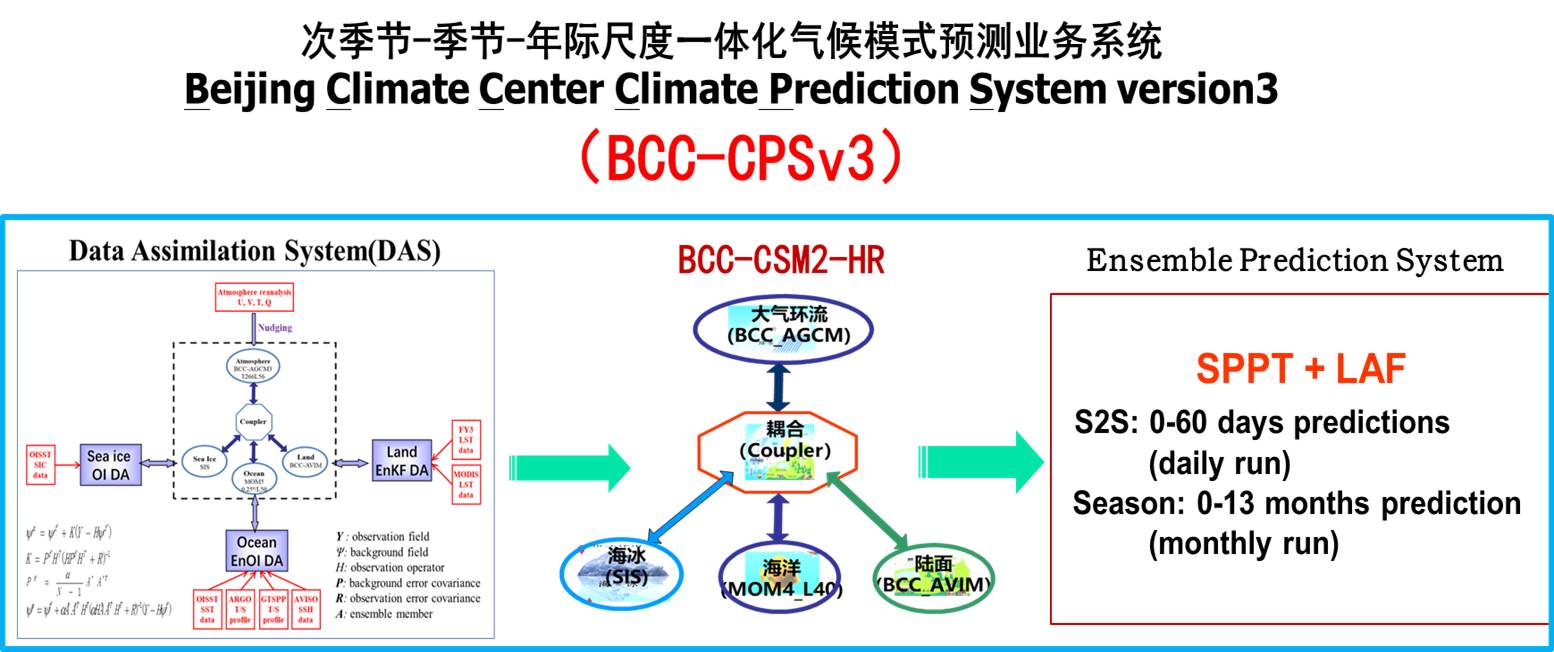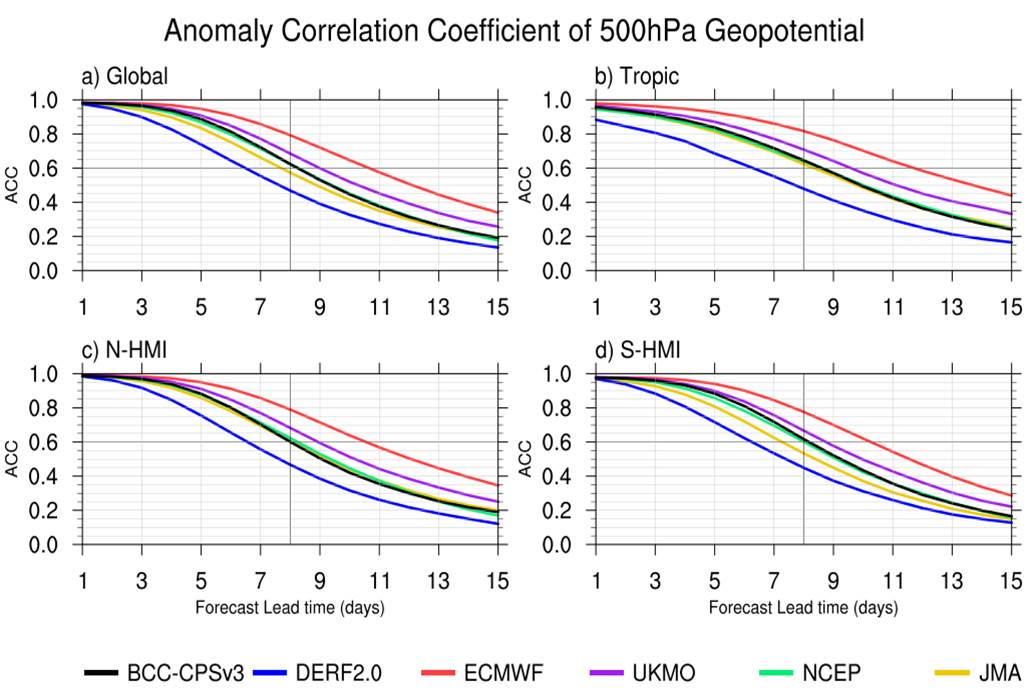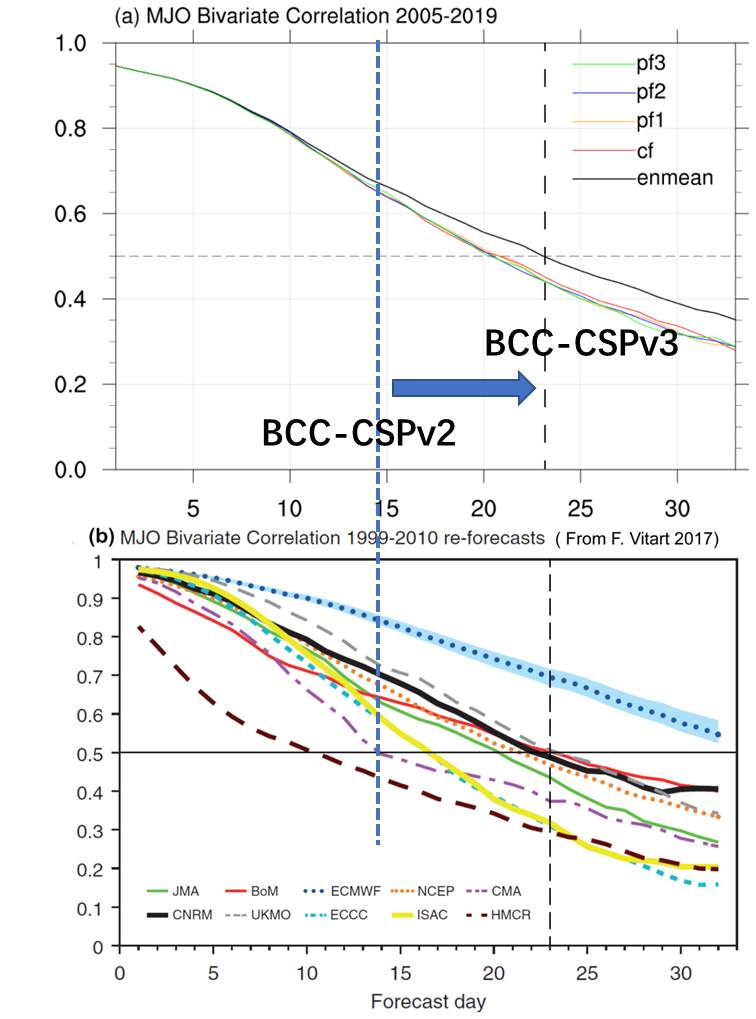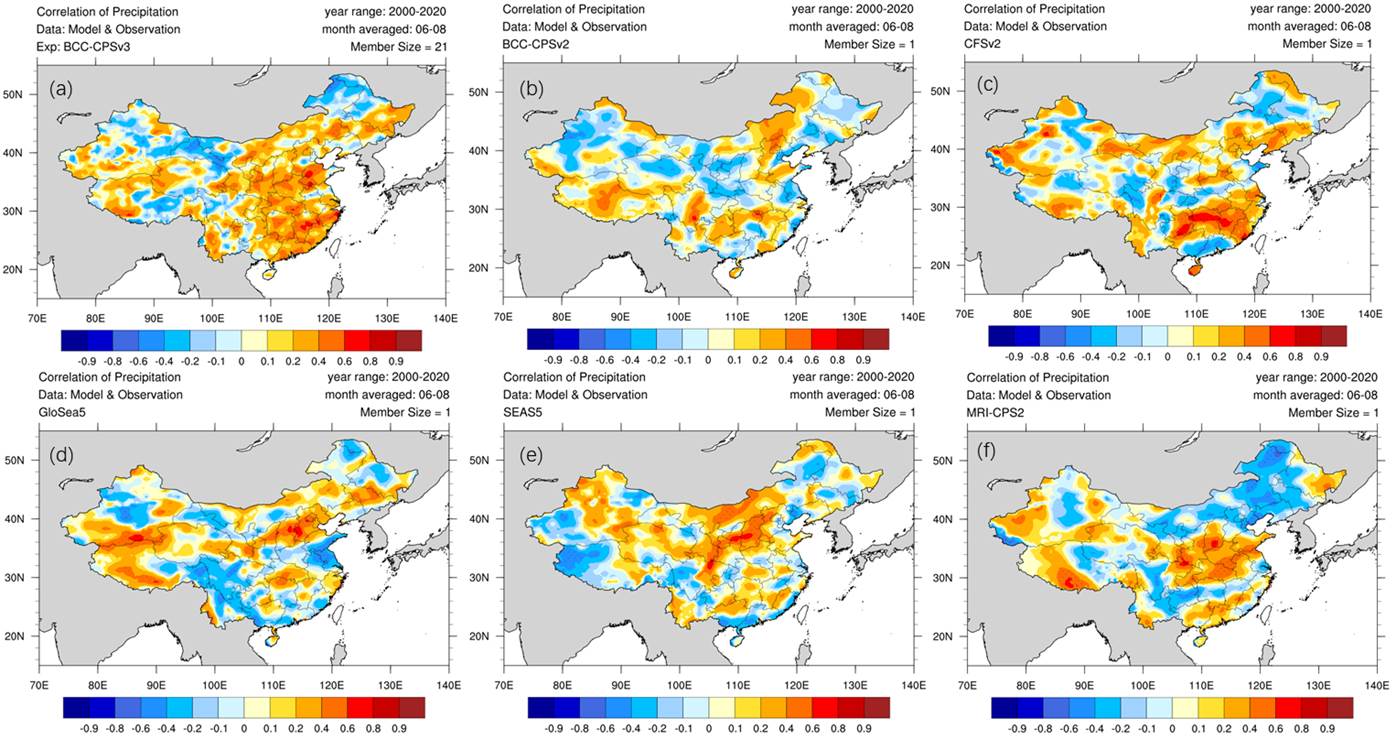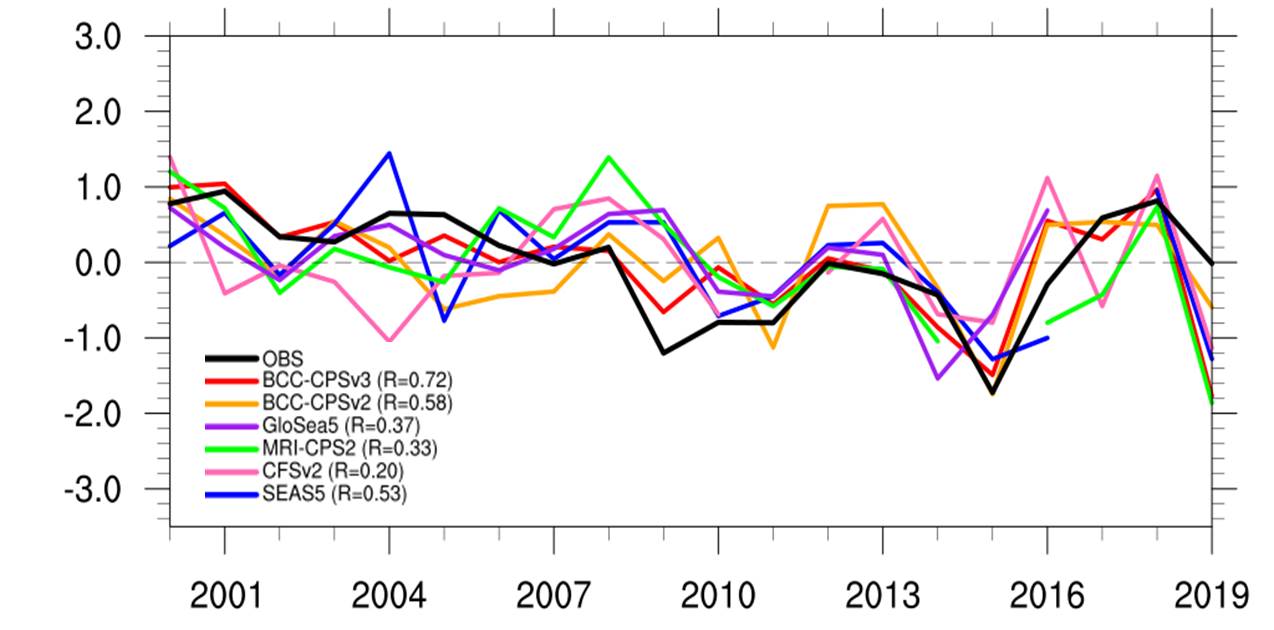CMA climate model evolves into third generation to be put into operation
Source: China Meteorological News Press
Date: 2020/12/04
The sub-seasonal—seasonal—interannual integrated Climate Prediction System of Beijing Climate Centre (BCC-CPSv3) was successfully passed the review on November 16, and will be soon put into operation in the future. The climate prediction system was independently developed by the China Meteorological Administration from 1995, and now has upgraded into the third generation, making climate prediction more accurate and robust.
Figure 1. The framework of Beijing Climate System Climate Prediction System version 3 BCC-CPSv3 consists of three parts: a global high-resolution climate model subsystem, a multi-layer coupling assimilation subsystem, and an ensemble prediction subsystem. These subsystems are all independently developed by CMA. BCC-CPSv3 has much better climate prediction capabilities, especially in aspects of the summer rainfall in eastern China and the Asian monsoon index, reaching the international advanced level .
Figure 2. Anomaly correlation coefficient over (a) the globe, (b) the tropic, (c)the northern hemisphere, and (d) the southern hemisphere between forecasts and ERA-interim data as a function of forecast lead time. The black, blue, red, purple, green and yellow lines denote results from BCC-CPSv3, DERF2.0, ECMWF, UKMO, NCEP, and JMA, respectively. Anomalies computed from BCC-CPSv3, DERF2.0, ECMWF, UKMO, NCEP, and JMA are derived from hindcast years 2005-2019, 1995-2014, 2000-2019, 1999-2016 and 1991-2010, respectively. According to the time scale, the main operations of BCC-CPSv3 include sub-seasonal to seasonal prediction and seasonal to interannual prediction. Among them, the sub-seasonal to seasonal prediction has been put into pilot run in November 2019, and participated in the international similar system comparison plan. The prediction capability for monthly temperature, precipitation, atmospheric circulation and others is better than the existing business systems of China. The capability to predict inter-seasonal oscillation has reached the international advanced level. Seasonal-interannual prediction has high forecasting skills for key indicators such as seasonal temperature, precipitation, Western Pacific Subtropical High, El Nino-Southern Oscillation Index, and global sea ice area.
Figure 3. Evolution of the MJO bivariate correlation between forecast and ERA-Interim as a function of lead time. The MJO bivariate correlations have been calculated over the period 2005–2019 for (a) BCC-CPSv3 and the period 1999-2010 for (b) ten S2S models during all the seasons. The Figure 3b is from F. Vitart. 2017. Compared with the previous generation, current global high-resolution climate model subsystem of BCC-CPSv3 combines many significant scientific and technical improvements for the model resolution and physical process parameterization in the atmosphere, land surface, ocean, sea ice, etc. The vertical range of atmospheric simulation has been extended into 65 kilometers from 40 kilometers. The simulation performance of the stratosphere key dynamic processes, tropical precipitation, and unique climate characteristics of East Asia has been significantly improved. It updates the land surface simulation coverage data, improves the simulation of lakes and farmland underlying surfaces, and put forward a dynamic phenology program that simulates the ecological processes of vegetation to replace the simulation method of fixed date. The horizontal resolution of the ocean simulations is increased to a global uniform 0.25°, and a vertical depth reaches 5500 meters.
Figure 4. Correlations of JJA precipitation between observations at 2280 stations over China and 3-months-lead predictions from (a) BCC-CPSv3, (b) BCC-CPSv2, (c) NCEP-CFSv2, (d) ECMWF-GloSea5, (e) UKMO-Seas5, (f) JMA-CPS2 The multi-layer coupling assimilation subsystem of BCC-CPSv3 realizes the coordinated assimilation of ocean, sea ice, and atmospheric multi-source data. The resolution of atmospheric analysis data reaches 0.45°, and the data resolution of sea surface temperature and sea ice concentration reaches 0.25°, laying a solid foundation for the calculation of the climate model.
Figure 5. Interannual variations of Webster-Yang summer monsoon index (Webster and Yang, 1992) from ERA5 data and 3-months-ahead predictions from BCC-CPSv3, BCC-CPSv2, GloSea5, MRI-CPS2, NCEP-CFSv2, and ECMWF SEAS5. The numbers in brackets denote the correlations between predictions and ERA-5 data. BCC-CPSv3 also includes an ensemble prediction subsystem with 24 ensemble samples, which can draw on the best of others and eliminate the forecast uncertainties caused by observation, analysis errors, and the inherent chaos of the atmospheric system. Editor Hao Jing
Previous issues
|

